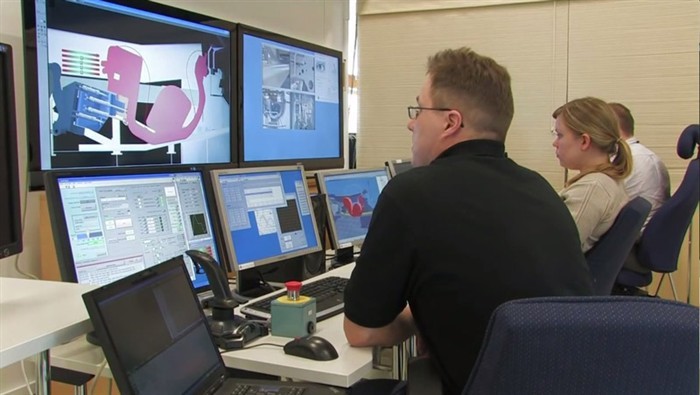Robotics software could generate ITER savings of roughly 7 million EUR

Experts testing the Remote Handling system platform in Divertor Test Platform 2, Finland.
GENERIS is a generic software controller for robots developed at the European Commission’s Joint Research Centre (JRC) in Ispra. It could be used as part of Europe’s contribution to ITER’s Remote Handling systems offering its precision and dexterity to the biggest fusion device of our times and ultimately, will help scientists bring the energy of the sun one step closer.
The software was masterminded by a team of engineers led by F4E’s, Emilio Ruiz Morales. It was originally conceived thanks to a series of other R&D projects managed by the JRC, covering a range of mobile robotics for surveying nuclear storage areas to telerobotics surgery with tactile feedback. It was later on continuously tested and improved over a period of 15 years reaching a high level of sophistication.
“ITER experts in the area of Remote Handling have been trying for years to take robotics manipulation to an outstanding level so as to meet the requirements of millimetric accuracy, extreme loads of several tonnes and safe remote operations” says Emilio Ruiz Morales. The likelihood of starting from scratch was one option together with the hefty price that Europe would have to pay in the range of 10 million EUR. As the good news about GENERIS was spreading fast and its successful deployment was being confirmed, a cost effective strategy was put in place in order to further adapt the software to the needs of ITER and potentially generate time and cost savings of roughly 7 million EUR.
What is so special about GENERIS?
The software package is virtually compatible with any type of robotics manipulator arm or robotics mobile device. Its unprecedented adaptability allows engineers to quickly customise it at all levels. It can be easily integrated in an existing system and is perfectly suitable for teleoperated systems used for the maintenance of fusion reactors. Its advanced control, calibration and tuning features are highly configurable and independent from the hardware platform. Its architecture allows the manipulation of multiple robotic systems in parallel scoring high on the scale of interoperability.
GENERIS is expected to be installed on the Divertor, Neutral Beam, Cask and Plug Remote Handling systems and the In-Vessel Viewing system. A software license agreement has already been signed between the European Commission and F4E. During the next 12 months, the software will be further upgraded and there is already interest from ITER International Organization and Japan’s Domestic Agency for ITER to test the system.
This is more than a success story about cutting down costs and sticking closer to schedule.
It is a concrete example of the spillover possibilities that research and development can offer across the board with the right degree of imagination and vision. Thinking out of the box was what it took to put GENERIS at the service of ITER’s massive fusion “box”.